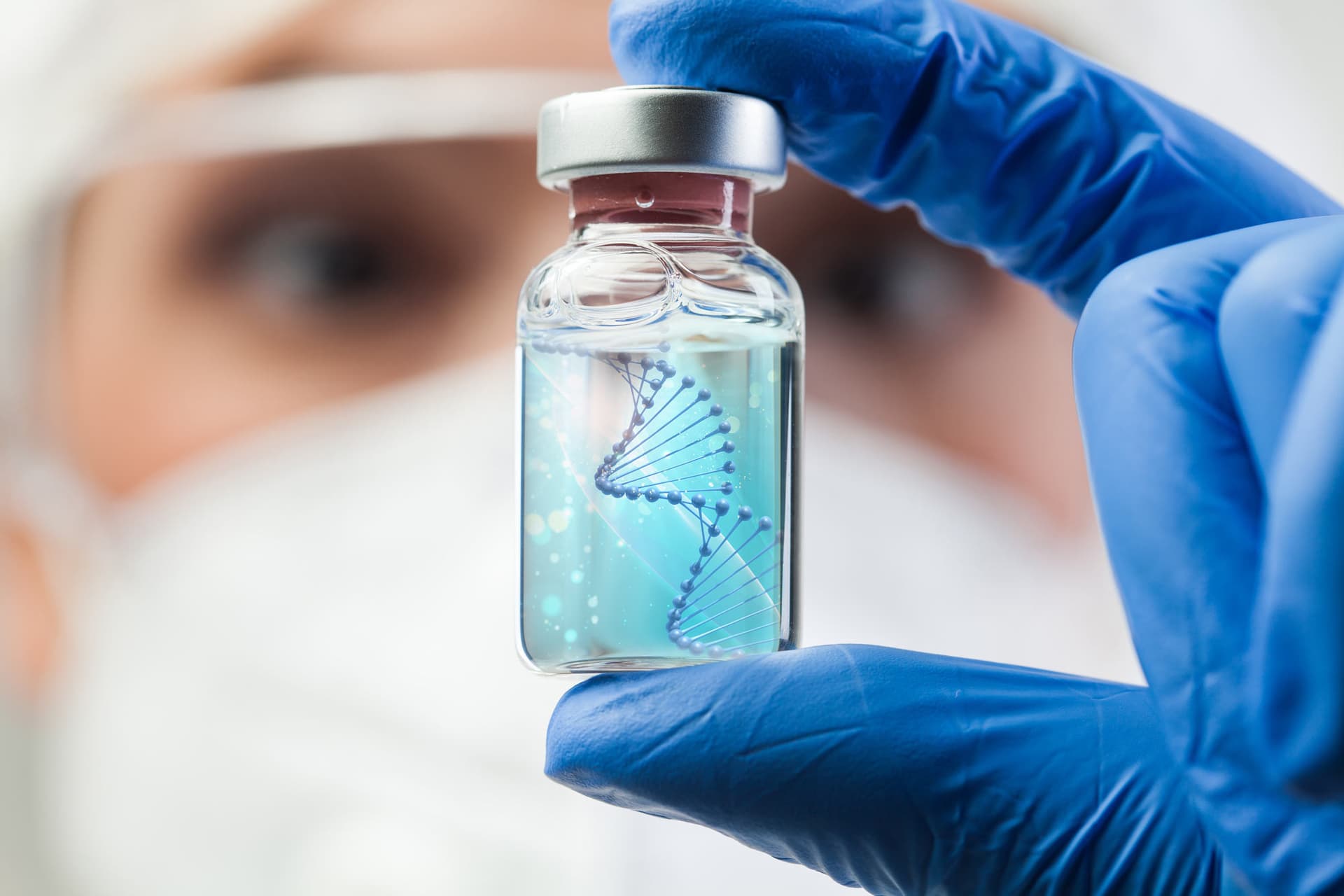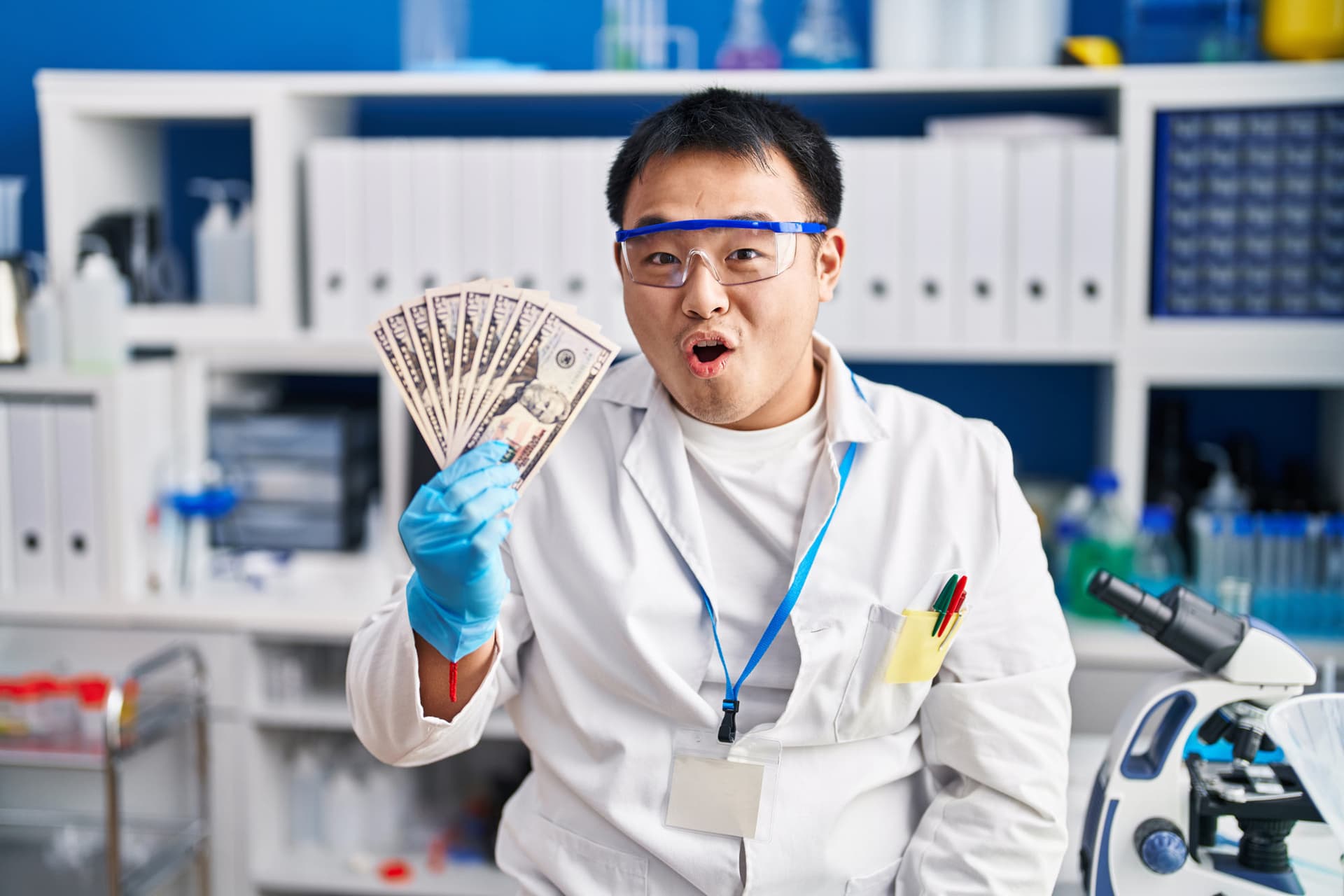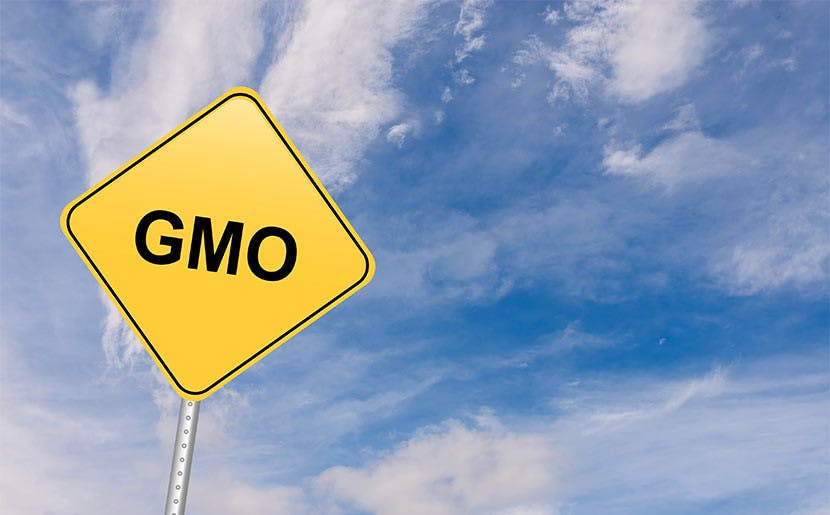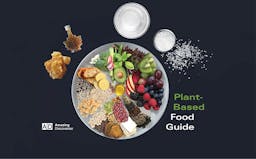What is Bioengineered Food?
Article by:
Tammie Burak |
21 min read
Are GMOs good or bad? What is bioengineered food? Is it the same or different from GMO foods? Read on for information about GMOs, labeling laws, and which bioengineered food crops are grown in North America.
What Does GMO Stand For?
GMO is an acronym for “genetically modified organism” and refers to a living thing that has been genetically changed. It’s genetic material (DNA) has been altered in a way that doesn’t occur in nature. Similar terms include: bioengineered, genetically engineered (GE), product of biotechnology.
The subject of GMOs is controversial. Some believe that genetic modification is safe and holds the key to solving such global problems as hunger and disease, while others believe gene modifying technologies are dangerous to humans and the environment. What’s the truth about GMOs?
What Is Genetic Modification?
The cells of living organisms contain information in genes that carry instructions that determine an organism’s particular traits or characteristics. Genes are made of double-stranded twisted ropes of deoxyribonucleic acid, or DNA. DNA contains the genetic information for an organism to carry out its life functions. It is your body’s instruction manual.1 Information in the DNA is converted into messages that direct the construction of all the different types of proteins needed for the organism to live, develop, and reproduce to make other organisms of its kind.
How Are GMOs Made?
Genetic modification changes the DNA, changing the nature of the protein-building messages. When one organism has a trait that is seen to be desirable in another organism, scientists isolate DNA from the donor organism and transfer it to a recipient, making a transgene, which just means that it is a gene transferred from another organism that doesn’t naturally belong to the organism transferred to. It sounds simple, but science has faced many obstacles on the road to genetic modification. One of them has been overcoming the mechanisms that protect the integrity of an organism’s genome. A genome is the complete collection of instructions for making an individual organism. Nearly every cell of our bodies contains a full copy of all our DNA.

A variety of methods has been developed to make a recipient incorporate the transgene into its own genome. In plants, chemicals, electric shock, and particle bombardment have been used.2 In animals, microinjection, stem cell-mediated transfer in which stem cells that have been cultured with the desired DNA are implanted in a developing embryo, or a carrier such as a virus is used to infect host cells.3
And as research goes on in the field of genetics, new methods are being developed. One new approach to genetic modification is gene editing, where DNA is changed by adding, removing, modifying, or replacing genetic material at particular locations along DNA strands. Engineered enzymes are used to target a specific DNA sequence and make modifications there.
Selective Breeding Vs. GMO
These processes do not occur in nature, though references to natural processes are often called upon to dispel concern. For instance, selective breeding is often used to help explain genetic engineering. While some people attempt to draw parallels between bioengineering and selective breeding, the processes and results are different. Selective breeding, whether in plants or animals, occurs when organisms with desired traits are bred to produce offspring with those traits. This process relies on the organism’s own reproductive mechanisms to make new combinations of DNA material and occurs naturally. For example, working with the original genome of the first dogs, humans have developed hundreds of distinctive breeds of dogs by choosing to breed animals that have the expressed desired characteristics. In the same way, lilies and other plants have been bred to have specific desired traits.
Natural selection falls within the parameters established by God which allowed for change within each species by reproduction. But God drew the line between “kinds.” In other words, man’s influence over the genome was limited by the species barrier which God Himself put in place. When animals from similar but different species are bred together, their offspring are almost always infertile because malfunctions happen in the genetic recombination process. For example, mules, the offspring of crossing a horse with a donkey, are infertile because horses and donkeys are two different species, although they’re both members of the same genus, Equus, and the same family, Equidae.
Mixing genes from organisms that share even fewer characteristics and are not members of the same family simply does not happen in nature. For example, the DNA of frogs and tomatoes would never come together in nature. God’s system governing the exchange of genetic information does not allow for such combinations.
And God said, Let the earth bring forth the living creature after his kind, cattle, and creeping thing, and beast of the earth after his kind: and it was so. Genesis 1:24
In the laboratory, however, humans are now able to cross not only the species barrier but the highest level of distinction between living things through genetic engineering. So now, genetic material can be exchanged between organisms that are so genetically dissimilar that they are separated from each other at the highest level in the taxonomical ordering system.

To better explain how unlike natural selection is from genetic engineering, consider this. All life forms are grouped into one of three possible domains: Eukaryote, Bacteria, or Archaea. Bacteria and archaea are single-celled organisms that differ from each other in big and important ways, so they each have their own domain. On the other hand, all plants and animals are eukaryotes and are more similar to each other than they are to bacteria or archaea.
Think about how different plants and animals are from each other. There’s not a chance that plant DNA would naturally ever mix with human DNA, not even through selective breeding. Not a chance. Yet ferns and humans belong to the same domain, eukaryote. Through genetic engineering, the limits on DNA exchange between living organisms are removed. For example, genes from the domain bacteria can be implanted in plants or even animals, in the domain eukaryote, which then become producers of proteins that were once unique to bacteria.
Could this be a problem? If introducing bacteria DNA into plants or animals or humans could improve life somehow, wouldn’t that be a good thing?
The problem is scientists cannot see the end from the beginning and don’t know what the consequences of genetic manipulation will be. There is no consensus among scientists regarding the safety or benefits of genetic engineering.
GMO History
A look at the history behind the development of genetic modification methods can help us better understand some of the controversial aspects of this field of research and real-world applications.
One of the challenges facing pioneers in bioengineering research was the fact that DNA molecules are so small they can’t be studied simply by looking at them. For a long time, scientists didn’t know how DNA was structured because they didn’t know what it looked like. It wasn’t until 1953, after experimentation with X-ray diffraction imaging, which mathematically analyzes refracted X-rays, that researchers developed the double helix model to illustrate DNA structure.
In the 1960s, researchers began using a gene for green fluorescent protein from jellyfish to bind with genes they were studying to better understand the genetic processes within cells. Later, the discovery of restriction enzymes provided a tool for cutting DNA which led to gene splicing experiments and the creation of recombinant DNA in 1972.
Science’s Holy Grail: rDNA
Recombinant DNA or rDNA is DNA that has been created by combining genetic material from different organisms that can replicate, or copy itself, naturally within the recipient organism. This was the ultimate goal for researchers at the time. It was this breakthrough in 1972 that laid the foundation for all future research in genetics.
With the ability to change an organism’s DNA, and essentially create new organisms, came many troubling questions. In 1974, The National Academy of Sciences, a private American organization whose membership is by invitation only, called a halt to genetic engineering research. A meeting of more than 100 scientists gathered to discuss ethical issues and concerns, including the potential for using gene engineering for eugenics, so-called improvement of the human species, or for creating deadly diseases. Their fears were hushed by the idea that genetic engineering could hold the key to curing disease instead. So, research in the field resumed and continued rapidly.

Unsettling Science
Research in bioengineering did not go on without some continued uneasiness in the scientific community, however. The famous Pusztai affair demonstrates the kinds of serious issues that are involved.
In 1999, Stanley Ewen and Arpad Pusztai published a paper in the Lancet which revealed that rats fed GM potatoes developed intestinal damage and adverse changes in their immune systems.4 This was the first peer-reviewed study on the safety of GM crops.
Although Pusztai was considered a leader in his field, with 300 published scientific papers, and the Lancet report was subjected to even greater rigor than usual–six reviewers rather than the usual two or three, Pusztai faced unrelenting criticism, the seizure of his data, and a public speaking ban. His career as a scientist was ruined.
The problems faced by Pusztai resulted from the complex relationship between science and business. The lab where Pusztai worked had ties with a pharmaceutical company and an agricultural genetics company which stood to profit from the commercialization of the GM potato it developed.
The treatment of Pusztai and other scientists who ventured to reveal problems connected with bioengineering could not fail to stifle freedom within the scientific research community. The Pusztai affair virtually issued a warning to researchers: Don’t cross big business or it will bite you. To this day, no one has ever tried to replicate Pusztai’s and Ewen’s study.
Are GMOs Bad? Summary of Concerns about GMOs
Following are concerns that have been expressed by consumers and scientists regarding GMOs or bioengineered food.
|
Immune system consequences. Reported negative effects on animals fed GM crops often involve immunity.5 |
|
Errors in the genome. Genetic modification can result in unintended results such as “extensive scrambling of the genome.”6 |
|
Insufficient testing. Producers are not required to demonstrate no harm for GMO foods. Although genetic modifications introduce foreign genes into food plants, they are not defined as food additives and are therefore not subjected to the kinds of rigorous testing required for food additives. Because of this, ‘‘There is no burden on the food manufacturer to demonstrate the safety of food products that are not food additives.’’7 |
|
Scarcity of long-term health studies. Research into the long-term health risks of GMOs is scarce.8 |
|
New risks. Gene editing technologies have exposed consumers to new risks: more profound genetic changes are now possible, along with unintended and unknown consequences; GMOs created by these new technologies are more difficult, sometimes impossible, to detect with current testing methods.9 |
|
Limited application of animal research findings to humans. Supporters claim that no harm is done to animals raised on genetically modified feed ingredients but few animals used in food-production ever live to their maximum possible age because they don’t die natural deaths. This disqualifies many studies as irrelevant to human populations. |
|
Unknown effects. Scientists cannot guarantee that genetic changes will not make formerly safe foods unsafe. There is no way to predict what unintended changes genetic modifications will produce. |
|
Allergenicity. Historically, people who were allergic to certain foods simply avoided them and anything made with them. For example, those with known peanut allergies could read a list of ingredients on a food product and if they didn’t see “peanuts” listed there, they could be confident the product was safe. But with genetic modification and no requirement for full disclosure, allergenic transgenes can be incorporated into products that would formerly have been safe and consumers would be unaware. |
|
Proteins foreign to the human diet. In addition, genetically engineered food crops introduce proteins that have never been part of human diets and no one knows whether these changes cause allergies or other health impairments. |
|
Antibiotic resistance. In order to determine whether a transgene has been incorporated into a host organism, scientists attach antibiotic resistance markers to the transgene. These antibiotic resistant genes could be transferred to bacteria in the human gut making antibiotic treatment of bacterial infections ineffective.10 |
|
Cancer. Tumors were reported in animals fed genetically modified feed in the first study that looked at GMOs and health. Concerns remain about whether GMOs play a role in cancer. For example, the use of genetically engineered bovine growth hormone (rBGH), or bovine somatotrophin (rBST), in milk production has raised concerns about whether its use could promote cancer in humans. The hormone influences the production of insulin-like growth factor 1 (IGF-1) which encourages the growth of cancer cells.11 Both rBGH and IGF-1 can survive the digestive tract and be absorbed intact.12 The American Cancer Society denies this, however and states, “The American Cancer Society (ACS) has no formal position regarding rBGH.”13 rBGH is approved for use in the United States, and though its use is prohibited elsewhere, most countries have no restrictions against the inclusion of milk from cows treated with rBGH as an ingredient in imported foods. |
Despite these concerns, businesses and governments around the world generally support the development and application of genetic modification technologies in many industries including food production.
Bioengineering and Big Business
With few restrictions and heady with the seemingly unlimited possibilities that lie before it, the science of genetic engineering has roared ahead, in spite of unresolved questions. Research is supported by massive funding from government and private organizations. For example, in 1990, the US government put out $2 billion to researchers for mapping the human genome.14 The work went on slowly, with less than 3% of it being completed by 1997. Then in 1998, a leading scientist in the project announced that he would be partnering with a private corporation and that the project could be finished within two short years.. While the announcement was good news to those anxious to see the project finished, sidestepping public funding and moving the project into a private lab provoked uneasiness about the precedent being set.

Relationships between science and business continue to raise troubling questions. Is it possible to completely eliminate bias considering the loyalty scientists must feel toward funding partners? How much of an impact do business ties have upon research bias? Are necessary health studies being neglected because of industry attitudes toward potentially negative reports? What role do industry interests play in government policies that regulate bioengineering? Are consumers adequately informed about and protected from potentially harmful GMOs?
GMO Labeling Regulations
The way different countries have dealt with these questions illustrates the lack of consensus that exists regarding genetic engineering.
In Europe, manufacturers are required to identify genetically modified ingredients on food labels. No such requirements exist in Canada or the US. Government messages have been overwhelmingly supportive of genetically modified ingredients in food industries in these places. For example, Health Canada states, “Internationally, scientists have concluded that GM foods pose no more risk to human health than non-GM foods.”15 Similarly, the US government position is stated by the FDA in these words, “The U.S. Food and Drug Administration (FDA), U.S. Environmental Protection Agency (EPA), and U.S. Department of Agriculture (USDA) ensure that GMOs are safe for human, plant, and animal health.”16
As a result of pressure from consumer advocacy groups, in 2022 the USDA introduced new labeling for foods containing genetically modified ingredients. However, many feel the new rules do little to protect consumers who want to avoid GMOs.
For one thing, the terms “genetically modified organisms” and “genetically engineered” that are familiar to consumers are being replaced with “bioengineered” on labels. Another point of contention for consumer advocacy groups is that the mark that identifies a product as containing genetically modified ingredients looks like a certificate of approval, not a warning, which could be confusing to consumers.
In addition, the new regulations would have allowed producers to put a QR code on packaging, putting the burden on the consumer to seek out information about GMO ingredients. A federal court ruled against this option in September of 2022, saying a QR code would not provide adequate information to consumers.
Another issue concerning some consumers is the fact that no policy exists that requires informing the public that animal products used for human food came from animals fed genetically modified feed. In the US, 95% of food-producing animals eat feed containing genetically modified ingredients.17
Are genetically modified foods safe? Are GMOs good or bad? The truth is, nobody knows for sure. A recent review of human and animal studies to assess the safety of genetically modified foods noted that the quality of available studies was “unclear” or had “a high risk of bias.”18
Of the 204 studies examined in the review, only one was on humans, leading reviewers to advise that more studies, especially on humans, are necessary. Nevertheless, reviewers made this sobering statement: “Serious adverse events of GM consumption include mortality, tumour or cancer, significant low fertility, decreased learning and reaction abilities, and some organ abnormalities.”
Authors of the review concluded, “It suggests the necessity of labelling GM food so that consumers can make their own choice.”
This is sound advice and echoes an age-old principle: Buyer beware.
Bioengineered Food Crops Grown in North America
 |
Corn. 88% of corn grown in the US, including both field and sweet corn, is genetically modified.19 No GMO popcorn is being grown.20 |
 |
Soybean. More than 90% of US grown soybeans are genetically modified. |
 |
Potato (White Russet). In 2019, GM potatoes were sold to processors and in 4,000 supermarkets across the US for fresh eating. Canadian producers were still reluctant to grow GM potatoes in 2019 but are facing continued pressure to do so. |
 |
Papaya. More than 90% of Hawaii’s papaya are GM.21 |
 |
Summer squash. Varieties include yellow crookneck, straightneck, and zucchini. |
 |
Canola. About 90% of canola grown in North America is genetically modified. |
 |
Alfalfa. 13% of alfalfa grown in the US in 2013 was GM. No recent data is available. |
 |
Apple (Arctic apple varieties). As of 2019, more than 1200 acres of Arctic apples were being grown in Washington State. Marketed to the food service industry in Canada and the US. Sold as packaged fresh and dried slices. |
 |
Sugar beets. More than 50% of the granulated sugar packaged for grocery store shelves is made from GMO sugar beets.22 |
 |
Pink pineapple. Not widely available. Sold only through specialty food stores in the US.23 |
You may have heard that some tomatoes sold in grocery stores are genetically modified, but this is not the case. No GMO tomatoes are on the market at this time. The FlavrSavr tomato was first sold in 1994 but went out of production in 1997.24
Another myth is that most wheat is genetically modified. The National Wheat Foundation says, “There is no genetically modified wheat currently commercialized anywhere in the world, and GMOs are not related to gluten.”25
These statements have not been evaluated by the Food and Drug Administration or Health Canada. Our articles, videos and products are not intended to diagnose, treat, cure, or prevent any disease. If you are pregnant, nursing, taking medication, or have a medical condition, consult your physician before following any recommendations or using any product on our site. You assume sole responsibility for your personal health, and you must use your own discretion under doctor consultation to determine whether any product or recommendation on this site is suitable for your personal situation.








